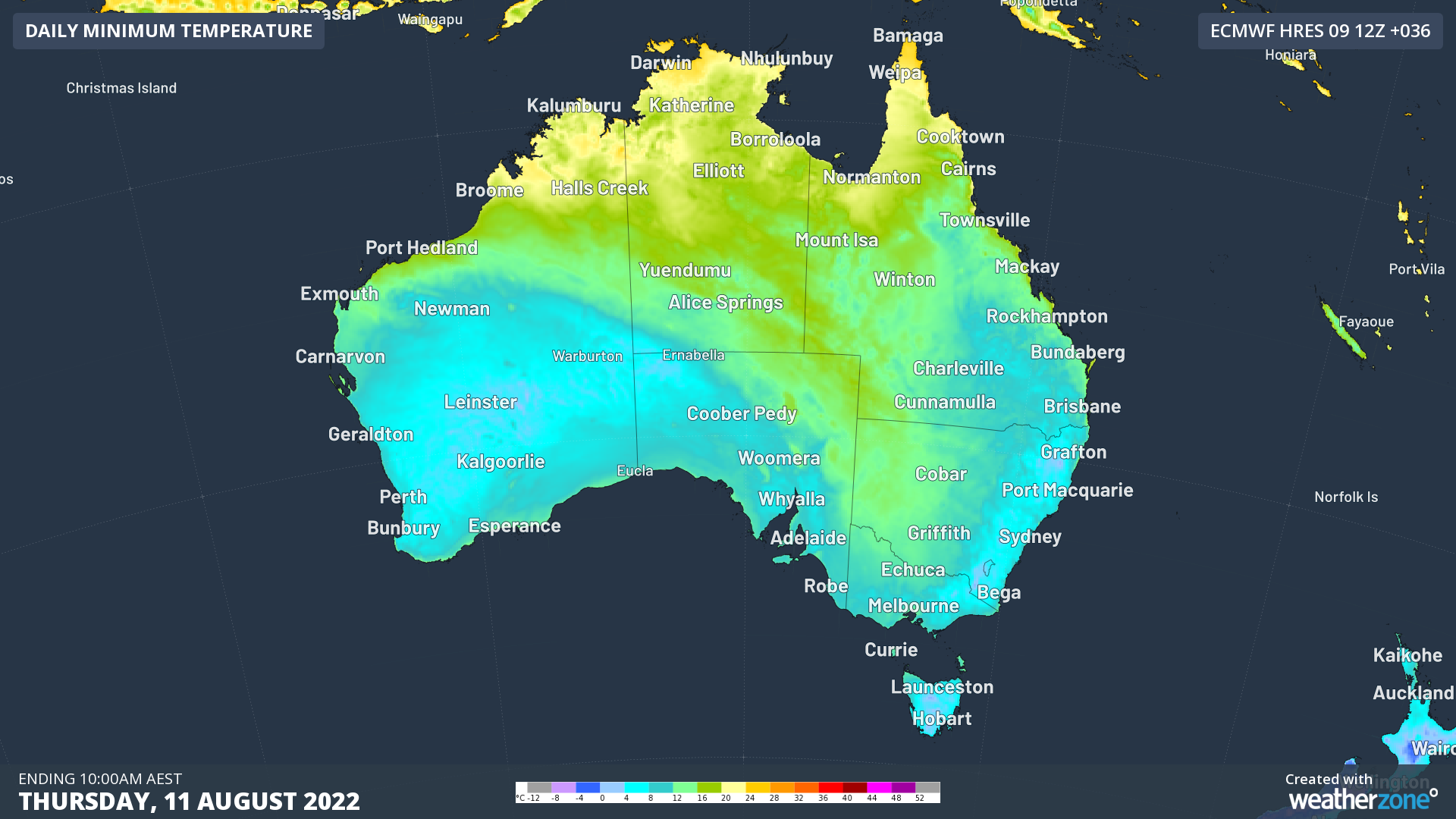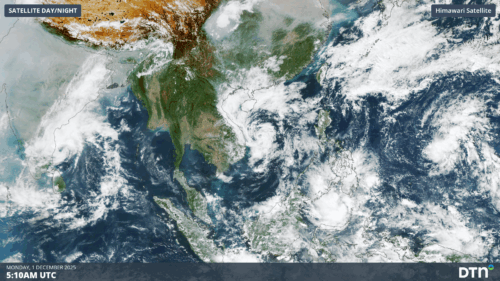Parts of southwestern Australia just shivered through their coldest day in more than a decade as a polar air mass hit WA.
The sequence of satellite images below shows a cold front and trailing polar air mass passing over the southwest of WA during the last two days.
Video: Composite infrared/visible satellite images over the past 48 hours, showing cold air spreading over southwestern Australia on Monday and Tuesday.
On Tuesday, Perth only reached a maximum temperature of 12.4ºC, which is about 7ºC below average for this time of year. This made Tuesday the city’s coldest day in two years and its fourth coldest day this century.
Nearby, Bickley’s top temperature of 9.4ºC on Tuesday was its coldest day since 2005 and its coldest August day in records dating back to 1994.
These abnormally low temperatures were made possible by a cold air mass combined with frequent rain and cloud cover, with Perth collecting close to 40mm of rain during the 48 hours to 9am on Wednesday. In the far south of WA, some of Tuesday’s precipitation even fell as snow on the Stirling Range.
Daytime temperatures will gradually warm up over the next few days, with Perth forecast to reach about 17ºC on Wednesday and up to 21ºC by Friday. However, clear skies and lighter winds will cause very cold overnight temperatures across southern WA over the next few nights, with frost likely over the state’s southern inland.

Image: Forecast minimum temperatures on Thursday morning according to the ECMWF-HRES model.
For more information on our energy forecasts, please contact us at bsuiness@weatherzone.com.au.






